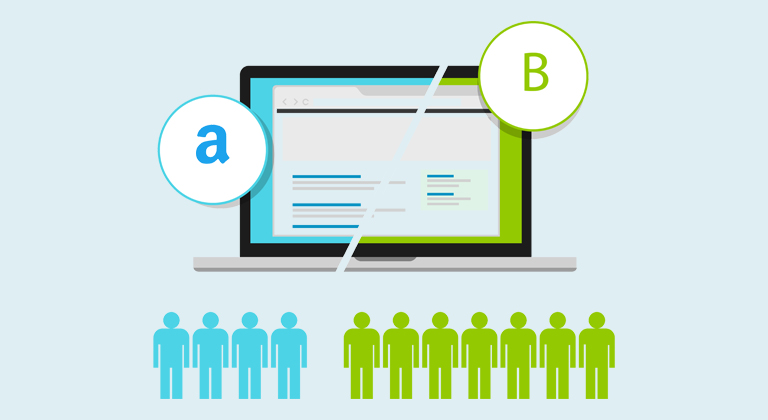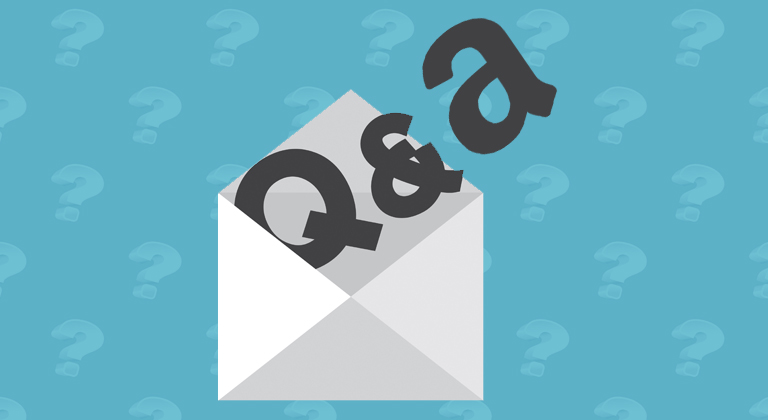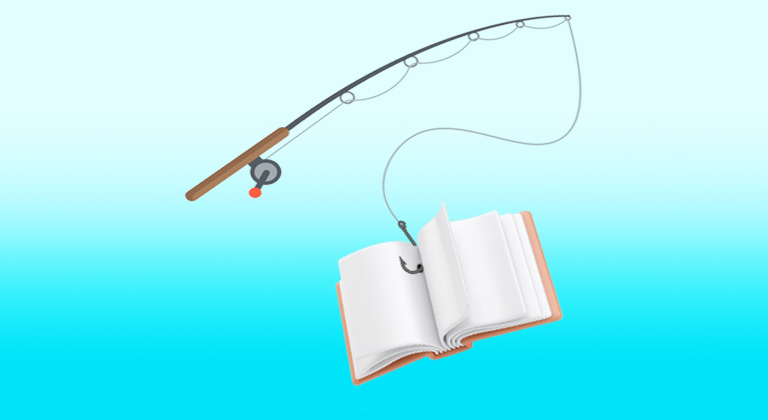Maximize Your Book’s ROI with Attribution Tags
Advertising can be expensive, so it’s important to be careful with your ads and always test the different elements to make sure that you’re maximizing your book’s ROI. Changing up the ad images and copy are the obvious first steps, but you can even experiment with other things, like what potential readers see when they click through the ad to your product page. And keep in mind that positive changes to your book’s product page won’t just help sell books to customers finding it from your ad, but from anyone that stumbles upon it organically as well.
The ability to properly measure the results of your changes has only become realistic recently, though, with the introduction of Attribution Tags. Without them, you’re really just guessing. That’s why today, Ginger is going through how to use these tags to figure out the net result (whether positive or negative) that your changes make to your bottom line. By running your ads scientifically – capturing your baseline, making small changes, measuring results – you have a much better chance at turning your unprofitable ads, and books in general, into true moneymakers.
As you might have gathered from my previous blog posts on the subject, I’m a huge fan of Attribution Tags. This new tool from Amazon has totally changed the game when it comes to marketing your books – finally giving self-published authors the same information that ecommerce masters use to generate incredible Return on Investment.
And it couldn’t have come at a better time! Especially since Amazon has now been forced to remove the ability to buy ebooks on their mobile app – severely impacting profitability for those of us who advertise our books on platforms like Facebook and Instagram.
Now we have this tool, however, we actually have to use it – and one of the most effective ways you can do that is to test the results of your advertising setup to see if they can be improved.
Testing = Success!
Testing changes and updates to your book’s product page on Amazon is something I’ve written about before. It’s one of the cornerstones of making your advertising profitable. During testing, you make changes to the product page of your books, or the ads themselves, and measure whether or not the changes improved the profitability of your advertising, or impacted it negatively. If you can keep improving the performance of your advertising, you’ll ultimately hit the sweet spot at which you’re making more money in royalties than you’re spending on advertising.
However, testing changes was always challenging for those of us advertising outside of Amazon because the platform never provided us any information about the traffic we sent their way. You could generate 1,000 clicks on a Facebook ad, but never be able to accurately tell how many of those clicks eventually became paying readers (if any!)
If you updated your blurb or changed your Look Inside to try and squeeze more purchases out of your traffic, it was similarly tough to tell whether the changes ultimately drove more sales or page reads. Authors were pretty much in the dark and reduced to taking educated guesses about the effectiveness of these updates.
Fortunately, Attribution Tags changed all that. Now you’re be able to track the behavior of every person who clicks on one of your Attribution Tag URLs and determine whether or not they clicked on the book’s details, or started reading it using Kindle Unlimited. This is invaluable information in itself – and it’s even more valuable when you start using it to improve the overall “salability” of your book by changing elements of it.
How to Start Testing
If you’re in the fortunate situation of being able to run Facebook ads for your self-published books (or on other platforms like Twitter and TikTok) your first priority should be to work out whether or not your advertising is profitable.
As I’ve said above, this used to be fairly difficult because you didn’t have any information about what the people who clicked on your ads did after they’d landed on your book’s product page on Amazon. You could generally only figure out if you were making money or not by seeing if your overall book sales increased by more than the amount you were spending on advertising – but that didn’t account for other factors, like organic sales or if you were running multiple promos at the same time (which one was working?)
Now we know better. By sending traffic to an Attribution Tag URL rather than the URL of your product page, you can track every click that occurs once that traffic lands on your book. Amazon even provides a figure for the number of sales made that are directly connected to your advertising, and an estimated figure for the Kindle Unlimited page reads that were generated.
Now, that’s not to say this amounts to all the revenue generated by your advertising. Getting your book higher in the rankings and increasing name awareness and visibility will often see a boost in overall organic sales as well – which is what we want, since those are sales we aren’t directly paying for. Those are basically all the sales that are NOT coming directly from our ad clicks. I always think the swell of organic sales generated by successful advertising should be considered a nice little bonus, but it’s what we can control that deserves our concentration for now.
Setting a Baseline
Setting a baseline is fairly straightforward – I’ll demonstrate by showing you the results of some testing I did myself earlier in the year.
Your baseline is the yardstick against which you measure all subsequent advertising efforts. In my case, it was going to be the results of a controlled period of advertising, as measured by Attribution Tags. The first baseline is the “control” and the subsequent ones are “experiments.” I know, I know – we’re getting scientific with it over here!
I chose five days of advertising on Facebook as my control – so I would spend the same amount of money every time, and be able to compare that against the results of my advertising.
The first thing I needed to do was set up my advertising. I used a Lookalike audience I’d generated from my subscriber list, a single image as my Facebook ad, and the URL I directed traffic to was the URL of my MC Romance Series.
(That bit’s important – I was sending traffic to the page for ALL the books in my series, not just the first one.)
I created at Attribution Tag on the Advertising on Amazon dashboard (you can learn how to do that here) and then tracked the results of my five days of advertising – and they looked something like this:

My Facebook advertising generated 646 clicks – which matched the figure my Facebook advertising dashboard told me (which is reassuring!)
Of those, 520 clicked on the Details View Page of one of my books giving me a 520 DPV.
I only had 1 Units Sold! I was honestly astonished by this, since I’d used to sell tons of books using Facebook ads (or, at least, tons of books were mysteriously being sold at the same time my Facebook ads were running. Prior to Attribution Tags I could never know for sure that those purchases came from advertising.)
Personally, I think this is partly because Amazon no longer lets customers buy ebooks on the Amazon app – but it might not be the only reason. That’s something I test later.
Finally, I had 10,900 KENP reads, generating $49.72 in royalties. Thank you Kindle Unlimited! I know a lot of people argue that it’s better to go “wide for the win” but if it wasn’t for KENP reads, I would have considered this advertising to have been a complete disaster. It’s FAR from the 5x or 7x ROI I estimated I was getting during my January advertising of last year.
Calculating the 70% royalty I received for the one book I sold, this puts my advertising baseline at $53.21. Now, when I start testing, I’ll be able to compare the results against that.
Making the Changes
Having set the baseline for my book sales, I took a long, hard look at my advertising setup and my book on Amazon and tried to work out how I might improve things.
The trick is not to change two many things at once – because if you then do and see a subsequent change in the results, you can’t be sure which of the changes you were testing was responsible.
I decided to change two things for my initial test (and then changed something else mid-way, which is a really bad decision. I’ll tell you more about that shortly.)
The first was where my ad was pointing. As I mentioned before, I’d sent the traffic from my Facebook ad direct to the Series page for my books – not an individual book itself. I did this because I’d had a LOT of success with that strategy in the past. Last year, I found people buying the entire series with a click, which they wouldn’t have been able to do on an individual book page. I also noticed that there are no ads on the series page for books, so I figured sending people to my series page would force them to click on one of my books and only one of my books.
But I wasn’t sure if this was the right approach or not, so I decided I was going to test sending the ad directly to the product page of Book One in my series. Obviously that meant I had to generate a new Attribution Tag with a new URL to direct to – but I was going to do that anyway to make sure the results of my baseline testing didn’t bleed into the results of any of my experiments.
The second change I decided to go with was adjusting my blurb. It’s already pretty well written, but I deleted a couple of line-breaks to bring more of the copy into the section you see before you have to click the Read More… button. If a reader does that, it registers as a DPV click (a Details Page View.)
Those were the only two things I decided to change… at first. But I’ll admit that I broke my own rule mid-way through advertising and also lowered the price of my book from $4.99 to $3.99 to see if this would have any impact on book sales. (Spoiler alert – it did!)
But for the most part, the process was straightforward: I made my changes, then ran the same advertising for the same period so that I could confirm results.
Measuring the Results
After two weeks, I took a snapshot of the results of this new advertising and it looked like this:

During the five days I advertised, my ad resulted in 634 clicks – which was only 12 fewer than my original baseline. This is reassuring since it shows the ads themselves produced comparable results (which suggests the data would be a good match to measure against.)
The first big difference, however, was in the 903 DPV figure. This was a 73% increase over my initial baseline advertising and shows that people who landed on my book’s product page seemed almost twice as likely to click on the details page and read the book’s full blurb. In fact, I got nearly twice as many DPV clicks as I did visitors to my page, which shows a MASSIVE impact.
I believe this is a result of both sending visitors directly to the first book in my series, instead of the series page, and adjusting the blurb of my book. Both made it much more compelling to click the Read More… button – and even if I didn’t see mind-blowing results in terms of sales and royalties, that’s definitely a good sign.
Secondly, I got 2 Unit Sales, rather than just one. If that doesn’t sound impressive, think of it this way: It was an 100% improvement! That being said, I don’t think the result is a fair measurement because I think the extra sale came in as a result of me lowering the price of my book from $4.99 to $3.99 – and I only did that mid-way through the advertising. If I’d run with a lower price right from the beginning, I think I’d have generated even more sales.
Finally, I received 11,725 KENP reads, resulting in $53.48 in royalties. Add in the 70% royalties from the two book sales I’d received – the princely sum of $5.59 – and my second round of advertising resulted in $59.07 in royalties.
Now, that might not sound like much – but it’s an 11% improvement on the results of my baseline, showing that the changes I’d made were making my ads more profitable. The theory now goes that if I continue to make successful changes, I could improve the results even more. In fact, if I ran exactly the same ads all over again, I think I’d get a better result because one of the changes (lowering the price of the book) only occurred midway through my experiment.
Your Road to Profitability
Now, an 11% improvement might not sound exiting – but remember that profitability comes at the moment you make a single penny more in royalties than you spend on advertising. Once you have profitable advertising, your entire world changes as an author – and that 11% might be all it takes to tip you over the edge.
Advertising your books is a business, after all – and even if most businesses don’t make insane amounts of money, what money they do make should be made in a repeatable way. Even the great Mark Dawson admits that he spends 40% of his royalties on advertising – but when you’re doing it at scale, there’s an entire career to be made that way.
The trick is to keep experimenting, keep improving, and measure all the results. Now, thanks to Attribution Tags, you can do that right down to the individual KENP read – and if you work hard and have courage, it might set you on the path to an explosive new chapter in your self-publishing journey.












Did your ad creative emphasize Kindle Unlimited? I have a theory that ads that emphasize KU attract KU readers, and KU readers don’t buy units (why would they?). I’ve noticed that when I have a book in KU, my unit sales are much lower than when it’s out of KU…so my theory is that when it’s in KU, you attract more KU readers, but maybe not as many unit sales readers? At any rate, I’m currently advertising and using attribution for tracking for a wide title, and see sufficient unit sales to warrant continued advertising. I also make more in a unit sale than in KU page reads for one book, which makes me feel like it would be hard to have a positive ROAS on a KU title (unless series read-through was added in). Your example is interesting! Great for you to share. And I think your pricing example is interesting, but without knowing volume of clicks, it’s hard to say if it’s statistically relevant. Just on the outset, the difference between one to two unit sales, while percentage-wise is significant, it’s tough to buy the price difference is the only factor. At a small volume, that could be chance, or not replicable. Also, I’m curious, were you targeting men or women? I’ve read that women are more price sensitive on book prices, and men tend to be less so. You’ve mentioned in prior posts that you have some books geared to men, and some to women, so that’s why I’m wondering about your target audience for this ad test.